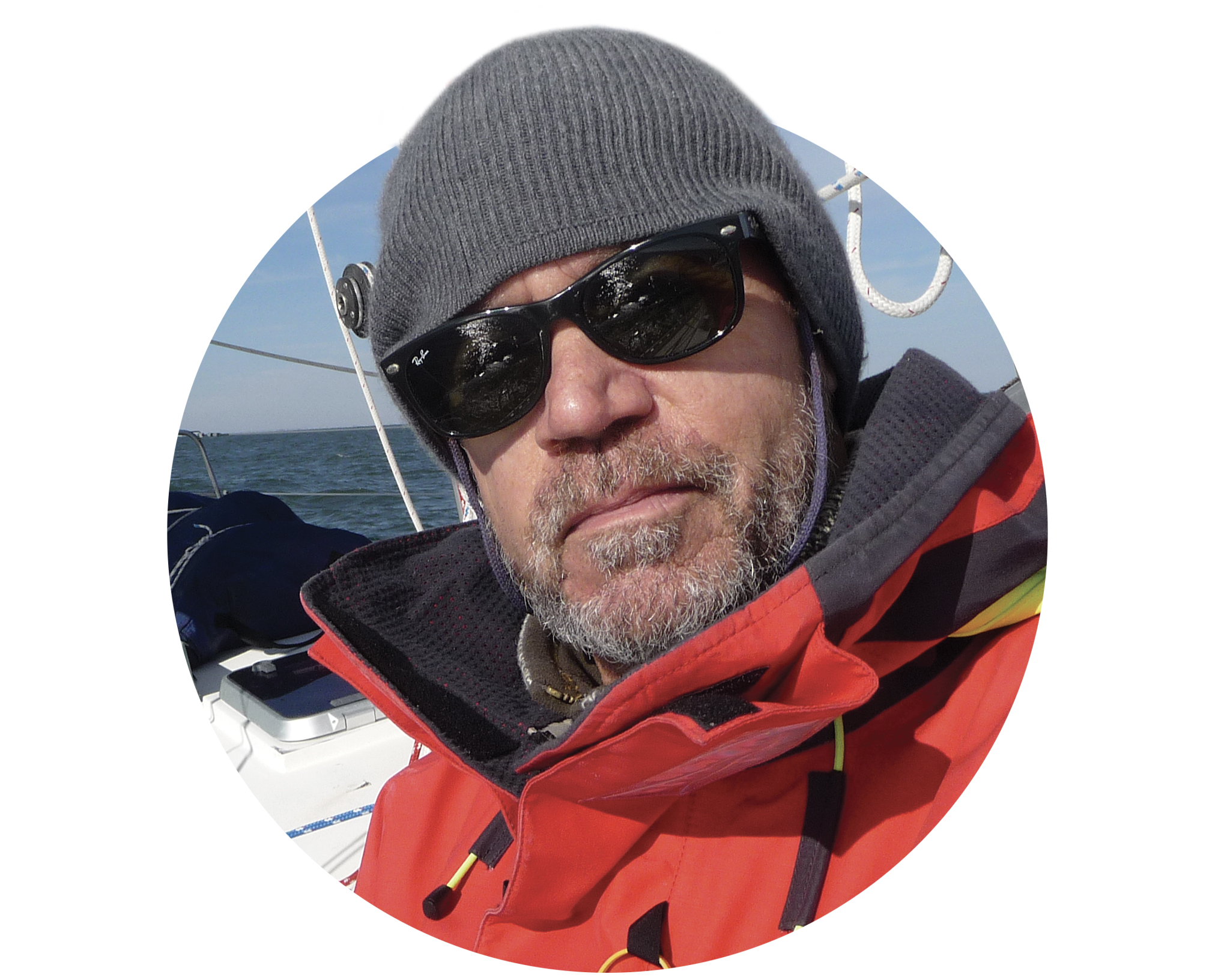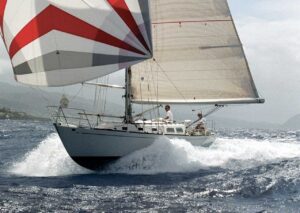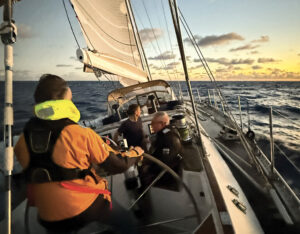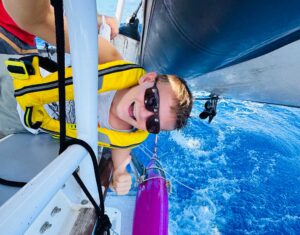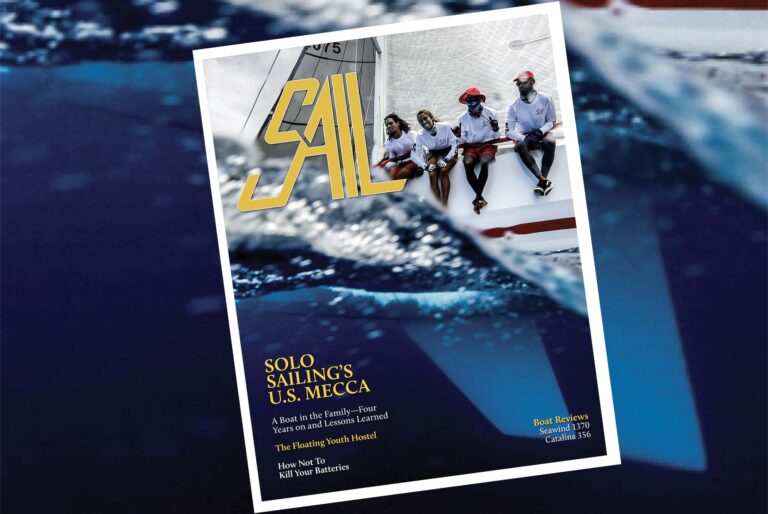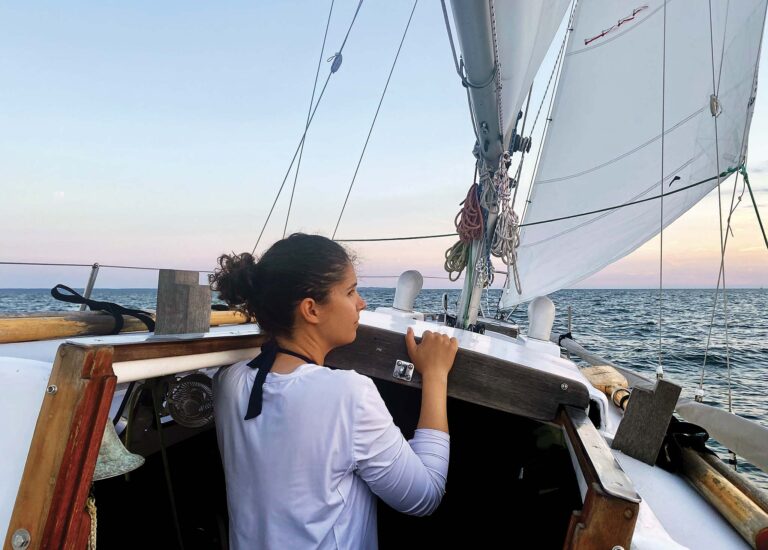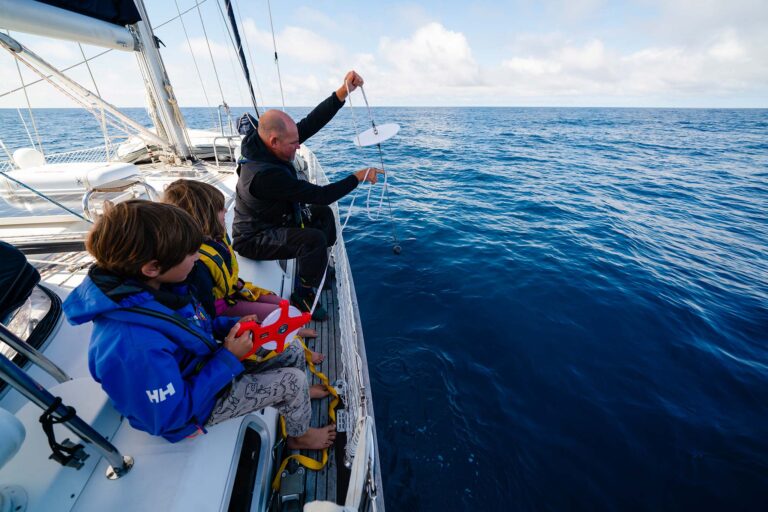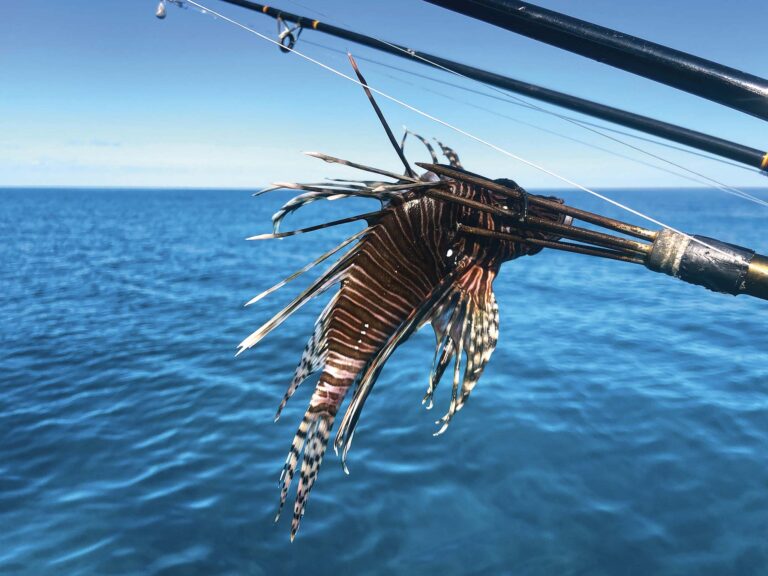
Am I the only one confused by all the different names for headsails these days? When I first started sailing, things were pretty simple. A non-overlapping headsail set on a boat’s headstay was called a jib. An overlapping headsail was called a genoa. You might differentiate between different sizes of jibs with simple numbers or by the percentage of overlap in the case of genoas. A very small jib, for example, was called a storm jib. A jib with a high-cut clew might be called a yankee. A secondary headsail set inside of a jib or genoa was called a staysail, but that was pretty much it.
I was reminded recently of how complicated things have become when I was showing my Tanton 39, Lunacy, to a prospective buyer. The buyer had read the spec sheet and asked, “So this boat has a Code 0 sail, right?” “Code 0 sail” being suspect number one on the list of fancy complicated headsail names people like to throw around these days.
What Lunacy, in fact, has is a cutter rig, with a yankee jib and a staysail. Because I am too lazy to strip the yankee off its furling rod and hoist a genoa in its place when conditions are light, I had my sailmaker build me a big overlapping headsail that furls on its own luff on a continuous-line furler, because this is much easier to handle.
“It’s not actually a Code 0,” I explained to the buyer. “I call it a screecher, which is what it would be called on a catamaran. My sailmaker calls it a jib top, because the clew is cut a little high. But really all it is is a genoa.”
Now the buyer was really confused. “Why do you call it a screecher?” he asked.
I shrugged. “Because I like the way the word sounds.”
Which is really all I think it comes down to. People are just making up names for sails willy-nilly, because they think they sound cool.
We need to get a few things straight. A Code 0 sail is not any large headsail that furls on its own luff, as so many people seem to think. It is a very specific IRC rule-beating sail, effectively an upwind genoa that rates as a spinnaker, because its mid-girth is at least 75 percent the length of its foot, so that it carries positive area in its luff and leech, which believe me, is not a good thing when you’re sailing upwind. In real life, nobody not worried about an IRC rating would ever want a sail like this.
A jib top in the days of square-riggers was a jib set high up on a stay with its tack many feet above the deck. However, today many people use the term to describe what we once called a yankee. I have no idea why. A solent is a jib set on its own stay directly behind a genoa on a headstay. These make it very easy to set the jib, but impossible to tack the genoa without first taking it down or rolling it up.
I am particularly amazed at the new flavors of staysail. In addition to plain old staysails, there are now also genoa staysails and spinnaker staysails, though to me they all just look like staysails. Then, of course, there is another universe of terms for lightweight nylon headsails that are not traditional symmetric spinnakers: drifters, gennakers, A-sails and whatnot. I’m very sure there are many names I’m forgetting here, and I’m also sure there are marketing guys at all the big sailmakers making up even more names as I write this.
It really is an impossible situation, so to help sort things out I have a modest proposal. How about if we give every headsail its own unique name, just like people or house pets, so that everyone can satisfy their yen for calling their sails something cool. When a buyer asks about my headsails, for instance, I might answer, “They are named Killer, Blitz and Tiny.”
Which says nothing about the sails, of course. So we do also need to describe what types of sails they are. Here I think maybe we should just restrict ourselves to three old-fashioned terms: genoa, jib and staysail.
You say jib top, I say screecher. Let’s call the whole thing off!
SAIL’s Cruising Editor, Charles J. Doane, sails his Tanton 39, Lunacy, on the Maine coast and down in the West Indies whenever he gets the chance. He is the author of The Modern Cruising Sailboat, published by International Marine, and is a contributing blogger at SAILfeed.com
November 2016

